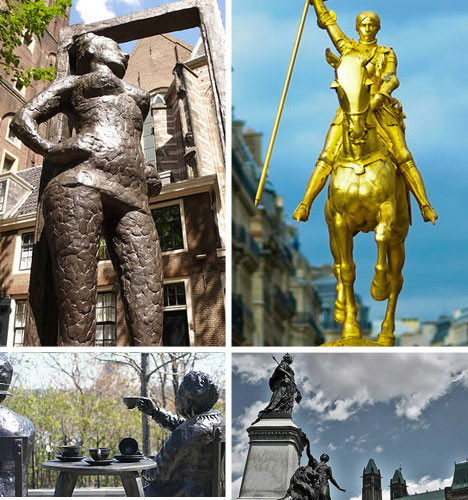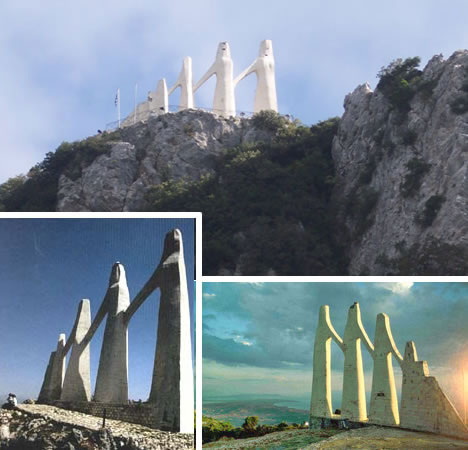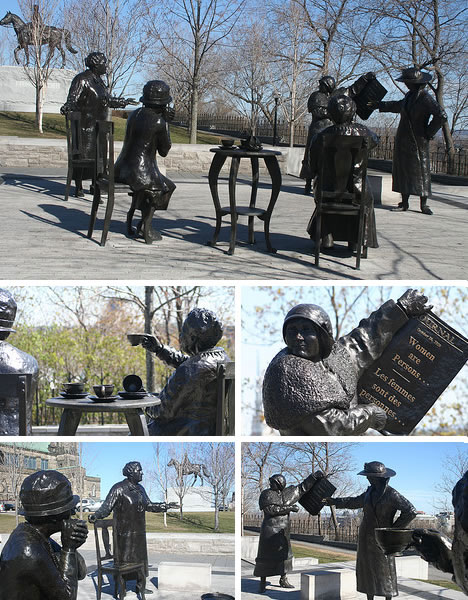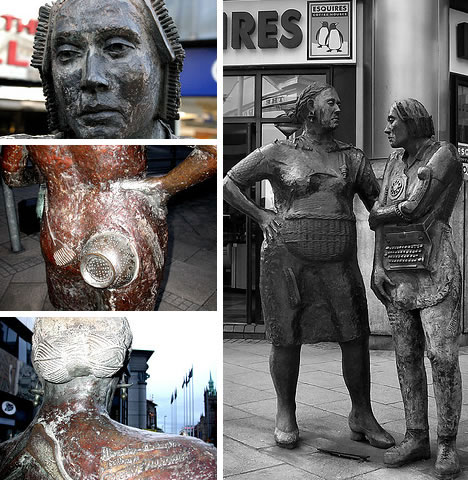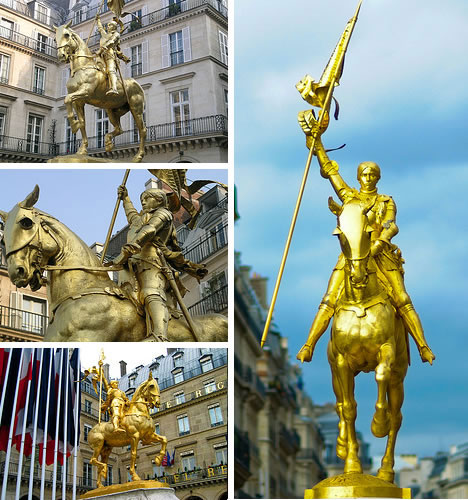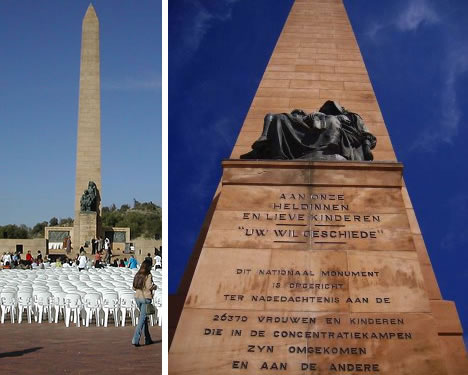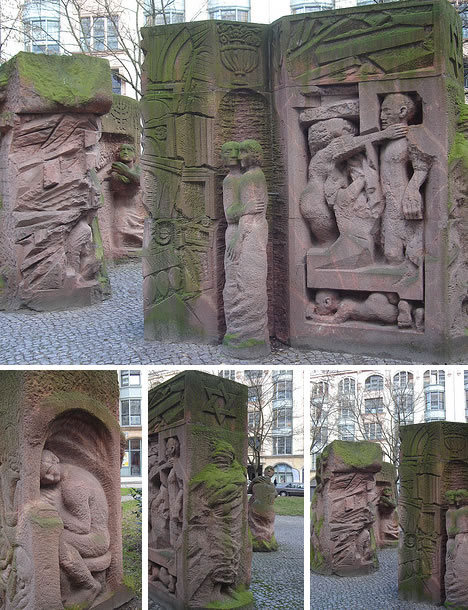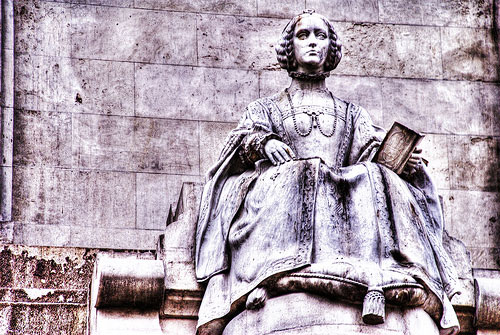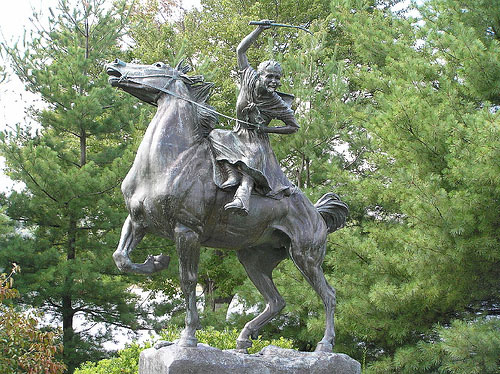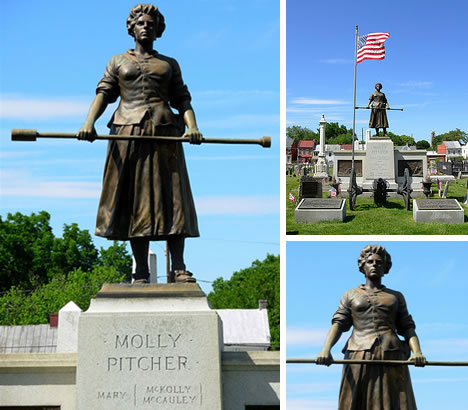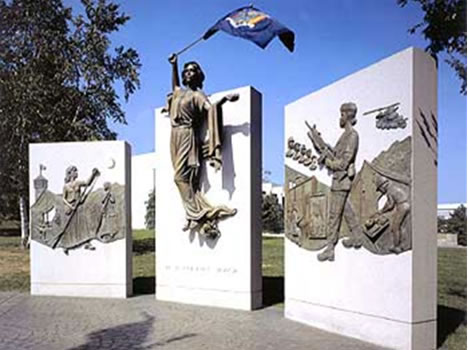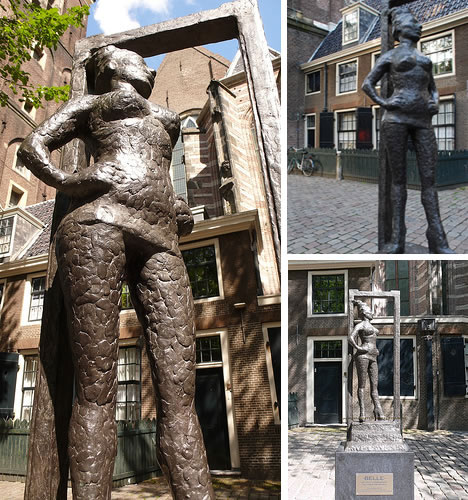Ever hear that women are the fairer or weaker sex? While not every woman (and not every man for that matter) can lift over a hundred pounds many historical women have been as strong (or even far stronger) than their male counterparts in other critical ways and at crucial times. From martyr French heroin Joan of Arc who fought against the British for the country’s territories to those that played a key role during the World Wars, women have demonstrated time and time again that they are not inferior to men. From around the world here are some of the most interesting monuments dedicated to amazing women of history – as well as one quite different memorial to Amsterdam’s “working girls.”
In Zalongo, northwestern part of Greece, lies a grandiose monument dedicated to the Women of Kassope. Representing the “dance of Zalogos” it was created by sculptor Zogolopoulos right above the hill, on the rocks where the Souliot women and their children committed suicide, not letting the men of the Turk Ali Pasha to catch them. Souli was one of the four small villages in Thesprotia, a prefecture of Greece, who decided to live in the mountains and free from the Ottoman Yoke.
Located on the Parliament Hill in Ottawa, Canada, The Famous Five or The Valiant Five statues were built in the memory of Emily Murphy, Irene Marryat Parlby, Nellie Mooney McClung, Louise Crummy McKinney and Henrietta Muir Edwards. The five women from Alberta became famous for asking the Supreme Court of Canada if “the word ‘Persons’ in section 24 of the British North America Act, 1867, include female persons?” It was them who to started the women’s rights movement in Canada in 1920s, because at that time women weren’t allowed to vote.
The longest reigning monarch in the UK history, Queen Victoria, is the person who officially chose Ottawa as Canada’s capital on December 31, 1857. The monument was sculpted 40 years later by Louis-Philippe Hébert, from Quebec and unveiled during a lavish celebration of the Queen’s Diamond Jubilee at the sixtieth year of her reign. Though there isn’t any definitive historical evidence, old folk tales say that the Queen used her hatpin to choose Ottawa, somewhere between Toronto and Montreal while other say that she just liked the watercolors near the city.
The Unknown Woman Worker monument is located in Belfast, UK, outside the Europa Buscentre and is dedicated to all women who work. It’s the city’s small tribute to those who worked hard to build the largest and most famous linen industry in the world. The two women statues are standing directly on the sidewalk and have a lot of utensils attached to them, representing the various activities women have or had. A shopping basket, clothe pegs instead of fingers, a telephone, or hairbrushes instead of hair to name a few things.
Joan of Arc (Jeanne d’Arc) is an emblematic figure in French history. She was also called the “Maid of Orleans” because during the 15th century, claiming divine guidance she led the French armies against the British in the Hundreds Years’ War lifting the siege over the Orleans city. She was only 19 years old when captured and found guilty of herresy. She was burned at the stake. 24 years later the Holy See found her innocent and Joan of Arc was declared a martyr, beatified in 1909 and canonized in 1920. Located in Place des Pyramides in Paris, the magnificent statue with the most famous medieval French heroine riding a golden horse was made by Daniel Frémiet in 1874 and was dedicated to the country’s only female Saint.
The National Women’s Monument or the Vrouemonument from Bloemfontein, South Africa is dedicated to those more than 27,000 martyr women who died during the Boer War, in the British concentration camps. It consists of a 115 feet tall obelisk and two bas-relief panels depicting women being herded into a concentration camp clutching their few paltry possessions and a weakened child dying while a woman kneels at his bedside.
The Rosenstrasse monument is located in a park in the old Jewish quarter of Berlin and consists of a group of sculptures commemorating the German women’s who successfully freed their husbands through non-violent protests. More than 1,700 Jewish men haven been rescued after being held by the Gestapo to be deported. The monument is work of German sculptor, Ingeborg Hunzinger, who did it in mid-80s and named it Block der Frauen (Block of Women). In 1995 it was brought to the park.
Dulcinea, which in Spanish refers to an overly elegant sweetness, is a simple woman from the village of La Mancha in Toboso. She’s only a fictional character in Cervantes’ novel, with whom Don Quixote madly falls in love without even seeing her. She was the most beautiful woman on Earth to him but just a figment of his imagination. The monument dedicated to Dulcinea is Located in Madrid, Spain, and was erected in 1957 by Spanish sculptor, Federico Coullaut-Valera Mendigutia.
Sybil Ludington, the daughter of a New York militia officer, was with her family on the night of April 26, 1777, when word reached her house that the British were burning the town of Danbury, Connecticut where munitions and supplies for the entire region were stored. With permission from her father, Sybil leapt on her horse and rode more then 40 miles to summon volunteer militia to repel the British raid. Sybil Ludington is a true American Hero and the statue erected in 1961 on Route 52 beside Gleneida Lake in Carmel, New York, was built in her memory.
Molly Pitcher is the nickname of a legendary heroine during the American Revolution War. Her real name was Mary Ludwig Hays and she had the task of carrying water to the men on the battlefield to swab their cannons (no, that isn’t a euphemism!). According to a story, in 1777 during the Battle of Monmouth, Mary had to take over the cannon firing after her husband fell wounded and she managed her task with bravery and courage. The Old Carlise Cemetery in Carlisle, Pennsylvania, is now guarded by her statue.
Located on Madison Avenue near the New York State Museum, the New York State Women Veterans Memorial honors all those women that served the military service for the last 200 years. Created by Glenmont artisan Hy Rosen, the 8 foot high monument symbolizes strength and commitment of women in defending the United States and its principles.
Of course, the list wouldn’t be complete without the Red Light District Statue in Amsterdam. Former prostitute, Mariska Majoor, got the idea to build a statue to all the famous “working” girls in the world, especially those from Amsterdam. The bronze monument was named “Belle” and is located close to the Prostitution Information Center and right in the front of the city’s oldest church. Ironic isn’t it?
